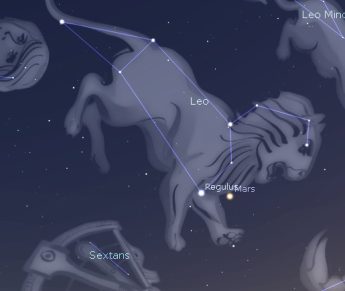This Week’s Sky at a Glance, 2025 June 7 – June 15
This Week’s Sky at a Glance, 2025 June 7 – June 15
It has been said we live in a topsy-turvy world. Actually, we live on one. Earth’s polar axis is tilted to its orbital path around the Sun, leaning just over a quarter of the way from upright to horizontal. At our summer solstice, the north polar axis is tipped toward the Sun and sunlight reaches us at a steep angle with concentrated warmth.
If you note the times of sunrise and sunset over the month you might be surprised to discover the earliest sunrise and latest sunset do not occur on the solstice. Although the most amount of daylight occurs then, we get our earliest sunrise around June 16 and latest sunset around June 26. Earth’s tilt plays a role in that, as does the fact that its orbit is not circular. We are about five million kilometres closer to the Sun in early January than we are in early July. Four centuries ago Johann Kepler showed that planets travel faster when they are nearer the Sun. Have you noticed that the time between the beginning of spring and fall is a week longer than between fall and spring?
We expect the Sun to reach its highest daily position in the sky, crossing the meridian, at midday (noon local standard time, accounting for distance from the centre of our time zone). However, the Sun’s daily north-south movement over the seasons and Earth’s varying speed in orbit make the Sun appear to reach the meridian ahead or behind schedule by as much as 16 minutes. Consequently, our 24-hour clock is based on an annual average noon called mean solar time. Sundial aficionados know they have to account for these daily corrections to agree with the clock.
This Week in the Solar System
Saturday’s sunrise is at 5:37 and sunset will occur at 9:09, giving 15 hours, 32 minutes of daylight. Next Saturday the Sun will rise at 5:35 and set at 9:13, giving 15 hours, 38 minutes of daylight.
The Moon is near Antares on Monday and it is full on Wednesday. Mercury sits to the right of Jupiter in bright evening twilight this Saturday and above Jupiter Sunday. By midweek orange Mars will be within a binocular field of blue-white Regulus and closing the gap. Venus and Saturn are widely separated in the morning sky with Saturn rising about 80 minutes before much brighter Venus.
The Saint John Astronomy Club meets in the Rockwood Park Interpretation Centre on June 7 at 7 pm. The Fredericton Astronomy Club meets in the UNB Forestry-Earth Sciences building at 7 pm on Tuesday. Tune in to the Sunday Night Astronomy Show at 8 pm on the YouTube channel and Facebook page of Astronomy by the Bay.

